Configurational Selection in Azobenzene-Based Supramolecular Systems Through Dual-Stimuli Processes
- PMID: 32373423
- PMCID: PMC7197086
- DOI: 10.1002/open.202000045
Configurational Selection in Azobenzene-Based Supramolecular Systems Through Dual-Stimuli Processes
Abstract
Azobenzene is one of the most studied light-controlled molecular switches and it has been incorporated in a large variety of supramolecular systems to control their structural and functional properties. Given the peculiar isomeric distribution at the photoexcited state (PSS), azobenzene derivatives have been used as photoactive framework to build metastable supramolecular systems that are out of the thermodynamic equilibrium. This could be achieved exploiting the peculiar E/Z photoisomerization process that can lead to isomeric ratios that are unreachable in thermal equilibrium conditions. The challenge in the field is to find molecular architectures that, under given external circumstances, lead to a given isomeric ratio in a reversible and predictable manner, ensuring an ultimate control of the configurational distribution and system composition. By reviewing early and recent works in the field, this review aims at describing photoswitchable systems that, containing an azobenzene dye, display a controlled configurational equilibrium by means of a molecular recognition event. Specifically, examples include programmed photoactive molecular architectures binding cations, anions and H-bonded neutral guests. In these systems the non-covalent molecular recognition adds onto the thermal and light stimuli, equipping the supramolecular architecture with an additional external trigger to select the desired configuration composition.
Keywords: azobenzenes; functional systems; molecular recognition; out-of-the equilibrium; supramolecular chemistry.
© 2020 The Authors. Published by Wiley-VCH Verlag GmbH & Co. KGaA.
Conflict of interest statement
The authors declare no conflict of interest.
Figures





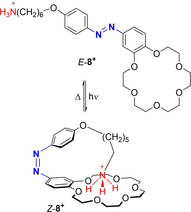
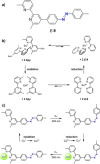


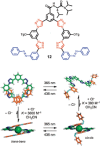
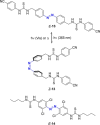





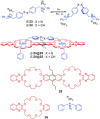
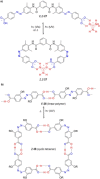




Similar articles
-
Chiral versus Achiral Assemblies in Multi-Stimuli Responsive Supramolecular Polymerization of Tetra-Substituted Azobenzene Dye.Small Methods. 2024 Oct;8(10):e2301681. doi: 10.1002/smtd.202301681. Epub 2024 Feb 12. Small Methods. 2024. PMID: 38344884
-
Stimuli-responsive host-guest systems based on the recognition of cryptands by organic guests.Acc Chem Res. 2014 Jul 15;47(7):1995-2005. doi: 10.1021/ar500046r. Epub 2014 May 8. Acc Chem Res. 2014. PMID: 24804805
-
Supramolecular chemistry at interfaces: host-guest interactions for fabricating multifunctional biointerfaces.Acc Chem Res. 2014 Jul 15;47(7):2106-15. doi: 10.1021/ar500105t. Epub 2014 Apr 25. Acc Chem Res. 2014. PMID: 24766328
-
Azobenzene: A Photoactive Building Block for Supramolecular Architectures.Chem Rec. 2017 Jul;17(7):700-712. doi: 10.1002/tcr.201600112. Epub 2017 Jan 5. Chem Rec. 2017. PMID: 28054435 Review.
-
Recent Progress in Azobenzene-Based Supramolecular Materials and Applications.Chem Rec. 2023 Nov;23(11):e202300126. doi: 10.1002/tcr.202300126. Epub 2023 Jul 12. Chem Rec. 2023. PMID: 37435961 Review.
Cited by
-
Supramolecular Complexation of Azobenzene Dyes by Cucurbit[7]uril.J Org Chem. 2023 Jul 7;88(13):8431-8440. doi: 10.1021/acs.joc.3c00423. Epub 2023 May 31. J Org Chem. 2023. PMID: 37256736 Free PMC article.
-
Visible-Light Responsive Sucrose-Containing Macrocyclic Host for Cations.Org Lett. 2021 Apr 2;23(7):2687-2692. doi: 10.1021/acs.orglett.1c00590. Epub 2021 Mar 17. Org Lett. 2021. PMID: 33729804 Free PMC article.
-
Visible-Light-Responsive Self-Assembled Complexes: Improved Photoswitching Properties by Metal Ion Coordination.Angew Chem Int Ed Engl. 2022 Sep 19;61(38):e202205701. doi: 10.1002/anie.202205701. Epub 2022 Aug 16. Angew Chem Int Ed Engl. 2022. PMID: 35972841 Free PMC article.
-
Anion Recognition by a Pincer-Type Host Constructed from Two Polyamide Macrocyclic Frameworks Jointed by a Photo-Addressable Azobenzene Switch.Materials (Basel). 2022 Jan 17;15(2):692. doi: 10.3390/ma15020692. Materials (Basel). 2022. PMID: 35057408 Free PMC article.
-
Chalcogen-Guided Control of Azoarene Photoswitching: Tuning Excited-State Energies Through Electronic Property Modulation.Chemistry. 2025 Aug 13;31(45):e01571. doi: 10.1002/chem.202501571. Epub 2025 Jul 22. Chemistry. 2025. PMID: 40693292 Free PMC article.
References
-
- Hartley G. S., Nature 1937, 140, 281–282.
-
- Bléger D., Hecht S., Angew. Chem. Int. Ed. 2015, 54, 11338–11349. - PubMed
-
- Baroncini M., Ragazzon G., Silvi S., Venturi M., Credi A., Pure Appl. Chem. 2015, 87, 537–545.
-
- Klajn R., Pure Appl. Chem. 2010, 82, 2247–2279.
Publication types
LinkOut - more resources
Full Text Sources

